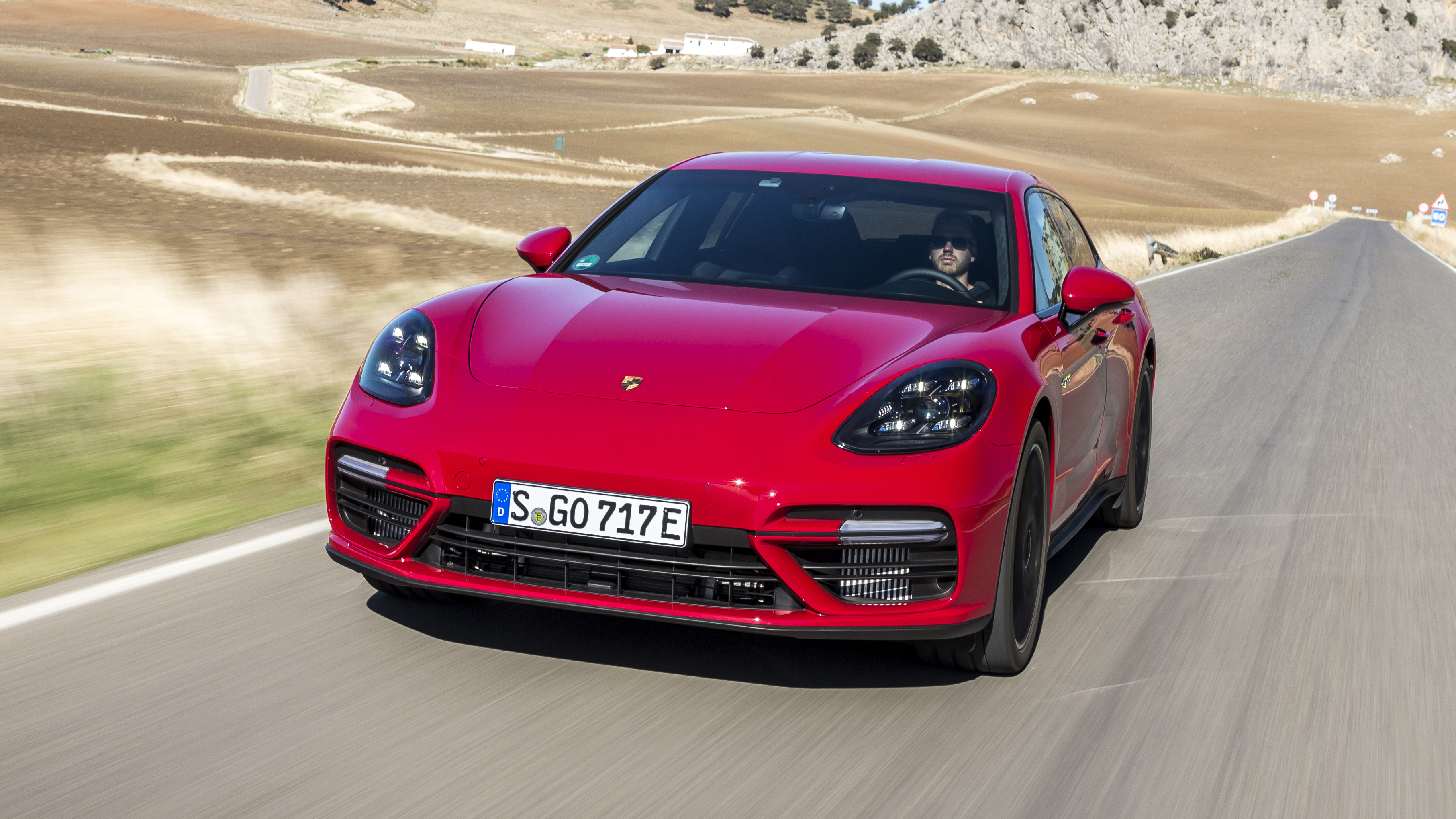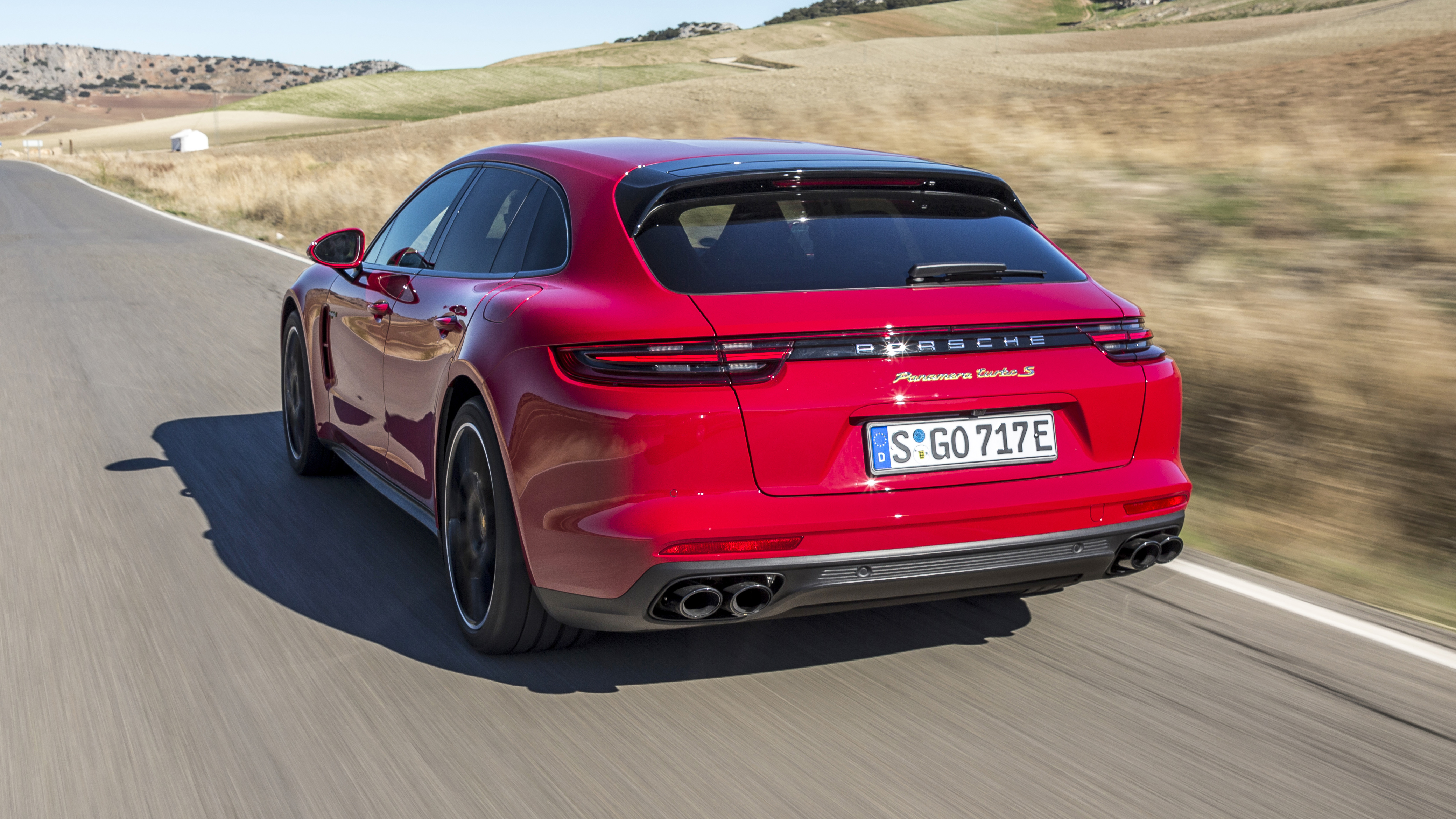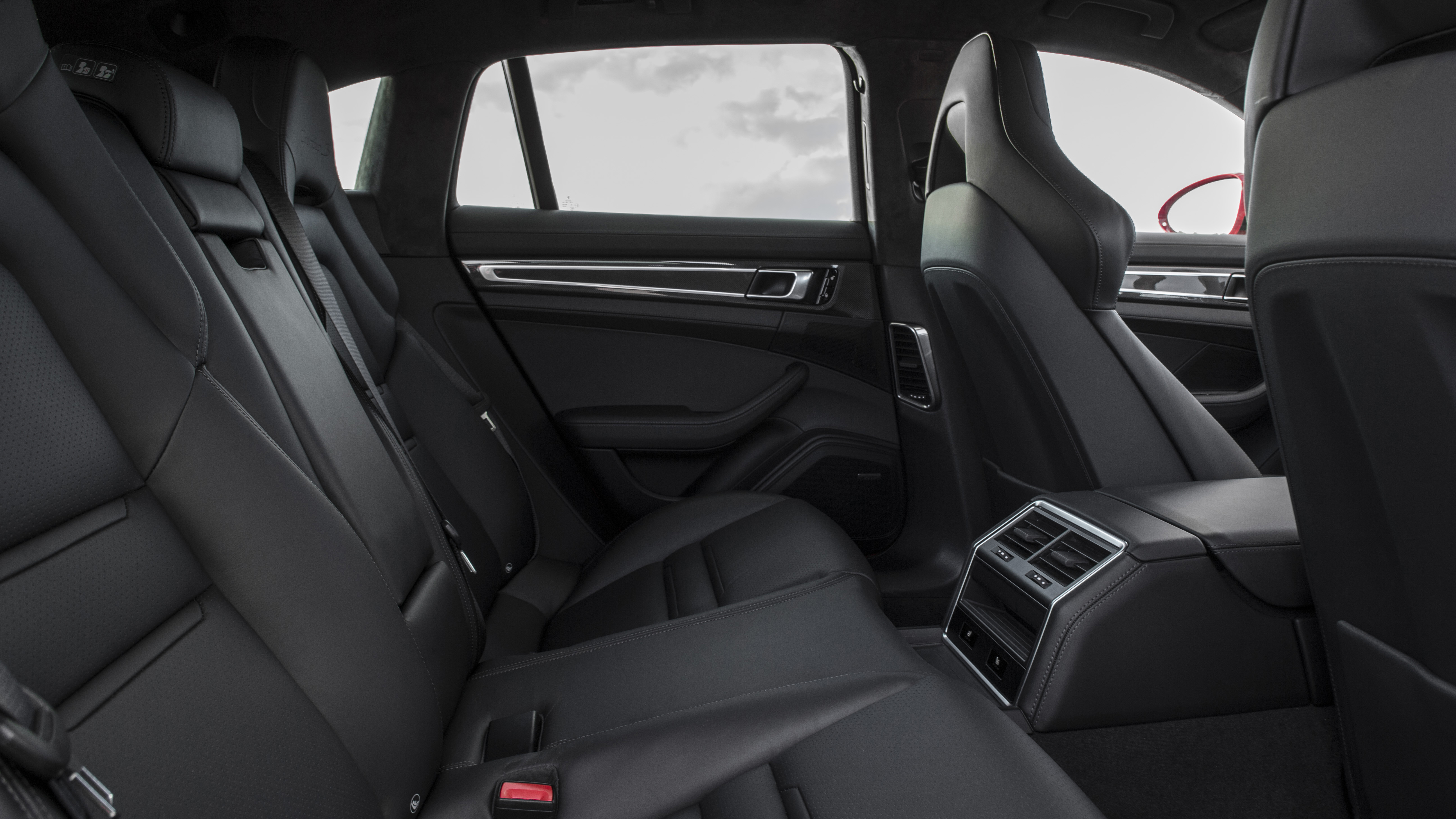
SPEC HIGHLIGHTS
- BHP
680bhp
- 0-62
3.4s
- CO2
76g/km
- Max Speed
192Mph
- Insurance
group50E
Long name. What does it mean?
You know what a Panamera is. It’s Porsche’s riposte to the Mercedes S-Class, BMW 7 Series and Audi A8; big, sumptuous barges that for the most part deploy as much technology as is humanly possible to keep their drivers far removed from the business of, you know, driving. This is not Porsche’s aim. Theirs is quite the opposite, in fact.
Turbo S means it’s fast – the fastest – but not hardcore or especially ‘focused’ because then it would be a GT or GTS. E-Hybrid means it’s a plug-in hybrid, so it has a conventional petrol-powered internal combustion engine that works in tandem with an electric motor and eight-speed PDK gearbox to deliver much speed and performance, as well as a bit of engine-off electric running to keep whoever it is that writes EU emissions laws happy.
Sport Turismo means it’s an estate or ‘shooting brake’, with a hatched-back, seating for four plus one stick-thin eight year-old sandwiched in the ‘occasional’ middle seat, and a reasonably capacious boot. In short, a 700-odd bhp all-wheel drive plug-in hybrid Porsche wagon. How times change, et cetera.
Golly. Sounds like a clever thing.
The cleverest. Tech and know-how was borrowed from the 918 Spyder, and Porsche is keen to stress this isn’t a hybrid for hybrid’s sake. Not a tax-dodge (like the lesser Panamera 4 E-Hybrid, a car we were not best impressed with), but a serious performance car where electrification enhances the experience, enhances the speeeeed.
And how much speeeeed are we talking?
0-62mph in 3.4 seconds and 193mph. The 542bhp 4.0-litre, twin-turbocharged V8 is supported by a 134bhp electric motor, which draws power from a 14.1kWh liquid-cooled lithium-ion battery giving 30 miles of EV range (at up to 87mph). A full charge from a standard plug takes six hours or so. The whole, deeply complicated and seemingly infinitely customisable system runs through an eight-speed PDK transmission and all-wheel drive.
Total system output is 671bhp and 649lb ft – and it’s the second of those two numbers that’s the most startling. Some very clever men from Porsche showed me its torque curve – which measures how much torque an engine produces and when. They’re usually just that – curves, because that’s how a conventional internal combustion engines makes thrust. The Panamera’s – with its e-motor, many turbos and big V8 – is a perfectly straight line. All the way from 1,400rpm to knocking-on for 6,000rpm. This is not normal, Porsche. But it is excellent.
I like MODES. Talk to me about MODES.
Top Gear
Newsletter
Thank you for subscribing to our newsletter. Look out for your regular round-up of news, reviews and offers in your inbox.
Get all the latest news, reviews and exclusives, direct to your inbox.
There are many. When you turn it on the TSEH (Turbo S E-Hybrid, geddit?), it defaults to E-Power mode, as it attempts to use up whatever juice is left in its battery before it signals for the V8. Hybrid is the mode you’ll live in and indeed switch to almost immediately – a kind of auto mode where the Panamera’s richly specified brain decides how, when and where to juggle petrol and electric power to best suit economy.
Sport and Sport Plus progressively make things more aggressive, by firming up the suspension, playing with the steering and throttle response, the active exhaust and so-on. A configurable Individual mode lives within the media setup and is activated by a button beside the shifter, and there are E-Hold and E-Charge modes that let you either maintain battery power (to, say, use at the end of your trip) or charge-up by dragging on the combustion engine (if you haven’t had the chance to plug-in at home). In our experience of the lesser Panamera Hybrid, that last one nukes fuel economy like you wouldn’t believe.
And acronyms. Bloody love those. Tell me about them.
Many acronyms – PTV, PCCB, PASM, PTM, PDCC, PAA to name but six – are standard and in fact necessary to keep the alarmingly hefty 2.3-tonne kerbweight and total system output of 671bhp and 649lb ft from pendulumming you into the nearest hedgerow quicker than you can say “Dear, my cornering Gs have made the kids vomit again”.
In order, these are Porsche Torque Vectoring, Porsche Ceramic Composite Brakes, Porsche Active Stability Management, Porsche Traction Management, Porsche Dynamic Chassis Control and Porsche Active Aerodynamics (a little spoiler on the roof’s trailing edge gives 50kg of downforce when deployed). The only system missing is four-wheel steering, and if we’re honest we’d spec it in without a moment’s hesitation. What’s a £1.3K option on a £141,868 (yikes) car, anyway?
The Panamera does indeed teleport itself and all its occupants from wherever you are to the apex of the next bend. It’s massively quick
Do they work?
Oh yes. But first, know that while the TSEH feels every bit as quick as the numbers suggest, it’s not quite as fast as your brain thinks something with 671bhp should be. Twiddle the rotary controller on the steering wheel into S or S+, or hit the amusing but pointless Sport Response button (which gives max attack for 20 seconds, as often as you like because there’s no cool-down), bury the throttle, and the Panamera does indeed teleport itself and all its occupants from wherever you are to the apex of the next bend. It’s massively quick, and the torque-fill given by the e-motor as the proper turbos spool is quite a thing to behold.
But a Mercedes-AMG E63 is quick too. Granted it’s way down on power, but the Panamera is so heavy the Merc has a better power-to-weight ratio (289bhp/tonne plays 293bhp/tonne). And the E63 delivers its speeeed with more drama – aurally and otherwise.
So I’ve arrived at the corner. Now what?
You go around it, at vast speed and with so little fuss you’ll emerge wondering whether there really was a corner there at all. The amount of grip on offer is truly immense – but then it is wearing 325-section tyres on the rear-axle (like a Ford GT) and possessing of a four-wheel-drive system that doesn’t understand the meaning of the word ‘slide’. It doesn’t roll (because it’s got 48V stabilisation), direction changes are flat, faithful and controllable and the steering is sensibly geared given the length, width and amount of grip generated by those fat tyres.
Our car had four-wheel steering and on the twisty Spanish mountain roads of our test route, it was profoundly effective – taking an easy foot out of the wheelbase and making the Panamera feel lighter still. You would not believe this thing weighs as much as a terraced house, but it probably does. A whole row, we suspect.
There a but?
A few actually. It’s too wide – over two metres with mirrors. That’s as big as a Range Rover and, because you sit in the width rather than on it, in Britain it’s tricky to place. You’d get used to it, we suspect.
But the main one is that for all the Panamera’s technology, none of it makes it very exciting. Interesting, certainly, but not exciting. You might argue what matters here is refinement and civility – this is no 911, after all – and the Panamera has both of those in spades. For the people who will end up buying it – because it’s the biggest, best and most expensive of what’s available to them – it will be perfect. But this is a Turbo S. You want/expect/need something that delivers a bit more grin-factor. You don’t grin as you drive the Panamera, you come over all serious and concentrate-y. Much like the car itself.
Which brings us neatly back to the E63. Here is a car with turbocharging but no electrification, an all-wheel drive system that lets you decouple the front axle for the sake of hooliganism, and hooliganism alone, and even in its most-locked down mode offers a degree of interactivity. It’s as fast, sounds better, is more spacious and £50,000 cheaper. The Panamera may be a more desirable object – interior and exterior design is superb, and it’s a Porsche so, you know – but the Mercedes is a more thrilling prospect. And what’s the point in buying the flagship, the fast one, if it isn’t to some degree quite exciting.
This is a brilliantly competent and a superb technological achievement, no doubt, and the prospect of driving one every day makes us all warm and fuzzy inside. We’d love one. But somehow this is the least exciting near-700bhp car I’ve ever driven.
Featured

Trending this week
- Car Review
BMW 1 Series
- Top Gear's Top 9
Nine dreadful bits of 'homeware' made by carmakers






